Aguascalientes
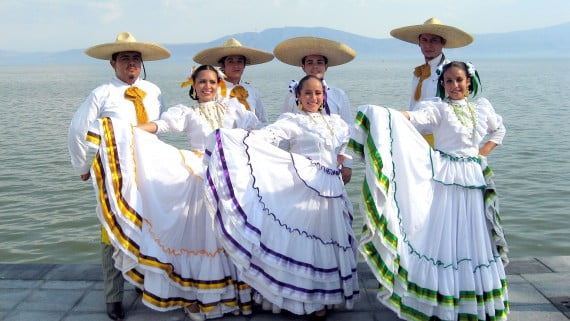
Aguascalientes is a state of Mexico that highlights the San Marcos National Fair, which is held annually between the months of April and May. It contests that reward the best costume held and, therefore, the suits are in this party are the most elaborate, colorful and attractive. Costumes include women, who are those who spend more time and participating in these contests. Although you can find suits the most colorful, the costume was designed by Jorge Campos Espino and had a variety of ornaments, which makes none of these dresses missing many drawings depicting from animals to fruit, all made at hand. Overalls woman always carried high, sleeves wide at the shoulder portion and are very tight at the waist.
Chiapas
The most typical is that of Chiapas Chiapas suit, which originally comes from the Mexican municipality of Chiapa de Corzo. It is estimated that the suit, consisting of colorful flowers on a black background or a dark color, was designed originally as a means through which represent the forest and its fascinating flora, with outstanding colors. The costume consists of a blouse with a neckline satin semi-circular air leaves the shoulders. The bottom, the skirt is embroidered with flowers of all colors, including predominantly orange, pink, blue and white. For embroidery of flowers, silk thread, why the production process is durable and requires patience is employed. Typically also quechquémel, a sort of blanket or poncho that is placed in the upper body and head which is introduced. also it highlights the fabric and the reasons for the traditional wedding attire of the municipality of Zinacantan, also in Chiapas, which can be seen in the photo below.
Chichén Itzá

The archaeological site of Chichen Itza in the Yucatan Peninsula and is part of Indian heritage that has survived to this day. For this reason, the inhabitants of the area have indigenous customs result of tribal culture that has been preserved in the area. Thus, clothing is characterized by suits in which no shortage of embroidered flowers with a broad palette of colors on white backgrounds. Women's dresses can be found in numerous colors, but always stand out as a major characteristic: they are tight at the waist.
Guadalajara

In the city of Guadalajara (Jalisco, Mexico), the costumes for both men and women are called traje de charro, although this name is known throughout the country because these suits have been around the world. As for the woman, it is a tangle of blanket whose length is almost ankles. The skirt is covered with embroideries with cross stitch technique linearly with threads of a variety of colors. The man may well be the typical mariachi, which is black in color, add some color accents and includes a cowboy hat, or it may include a kind of poncho made of cloth of wool, llama, alpaca or other animal. This poncho takes an opening in the center through which the head is introduced and usually wear thick stripes or other designs of different colors. Originally, the poncho, which today is used throughout Latin America, was used by Indians, mestizos, whites, gauchos, etc. and still it preserved today.
Michoacán
The culture of the Mexican state of Michoacan is known as Tarascan culture or purépache, which already existed in pre-Columbian times, about 1200 B.C. Thus, the current Purepecha village has a specific indigenous traditions including no lack of typical dress, the result of the various craft activities performed by the residents of this community. Special mention women's costume, which consists of a skirt and a shirt. As for skirts, there are two types: the drape and petticoat. The first is a sort of rectangular canvas made of wool and hand weaving. Its breadth originally served to shelter during cold winter nights, hence the name sabanilla. During the day, this skirt is used as a skirt and attached to the waist with a sash. The petticoat is also wool and drape differs from that at the top carries a cotton strip strong color, which contrasts with the strip bearing on the bottom, which is light in color. Shirts can be found in different types, but perhaps the most common is consisting of a shirt is folded over the chest and back, and is embroidered with white details or colors.
Nayarit

Oaxaca
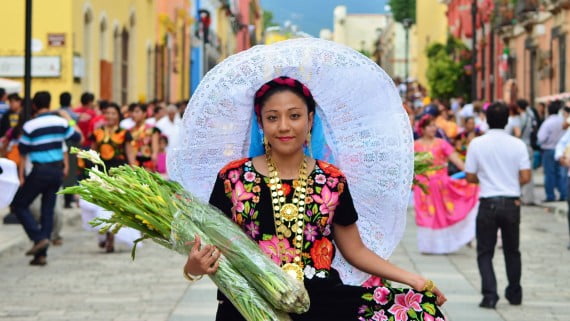
Although all the costumes from Mexico are characterized by very colorful, perhaps clothing used by women of Oaxaca is the most colorful of all. In these dresses it joins a mix of indigenous traditions and colonial development techniques, such as bobbin lace or ruffles flamingos, among others. In the District of Jamiltepec specifically, dresses have a wide range of indigenous symbols such as the sun, stars and other geometric shapes that often resemble spiders or lizards. Skirt or rolled typical posahuanco called.
Puebla

The typical quintessential woman in the state of Puebla (Mexico) suit is known as China Poblana, which is made in the upper part by a low-cut white blouse, so that neck is shown and chest. Its color is white and her colors are woven embroidery that usually given flower shape. At the bottom, the woman wears a skirt that is known beaver, because the fabric which is constructed. Said skirt, which can also be called zagalejo consists of two layers: first, the top layer, which is about 25 cm and is made of calico or green-based (known as cut); secondly, the bottom layer, which is covered with drawings of sequins and reaches the ankles.
Saltillo
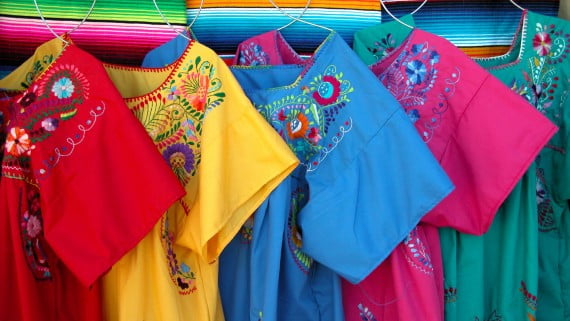
Saltillo is the capital of the state of Coahuila de Zaragoza (Mexico) and whose costume male is known to blanket or poncho. It is a kind of poncho that is used to shelter from the outset, since it is made of cotton fiber or wool sheep. The thread, as almost all the typical clothing Mexico, is multiple colors and designs that are woven are unique and are open to the imagination. As for the female attire, it is characterized by embroidered blouses and frayed that can be found in many colors and embroidered with flowers or other geometric shapes.
Sarapes
Veracruz
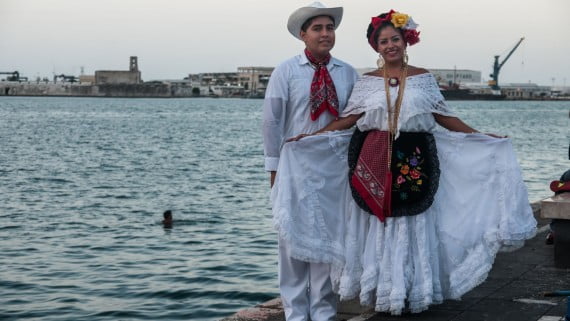
The typical costume Veracruz (Mexico) said that it mainly white, either in the case of male and female clothing, and called Jarocho costume. The women dress has a long, wide skirt that covers the ankles and on the neutral white color, some lace or embroidery in various colors are sewn. This skirt an apron or apron which is usually black, maroon or burgundy and velvet fabric is placed. This apron can also have some embroidered details in different colors. The top is the same color and may or may not have sleeves. Finally, also it includes a silk shawl which is usually yellow with white details and may have fringes or other decorative elements. The male attire, meanwhile, has white trousers and a shirt of this color, which should always carry four pockets (called bags in the area) and four tucks or pleats in front and six behind.
Yucatán

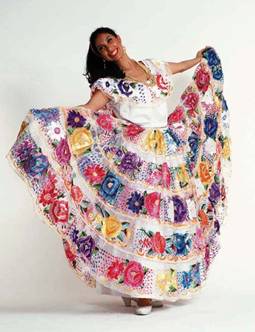
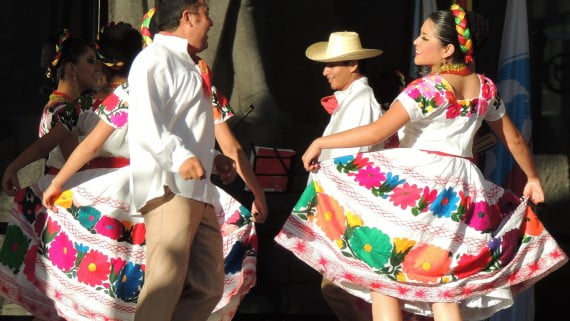
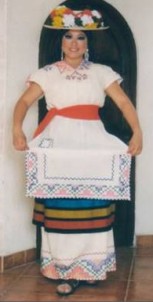
No hay comentarios:
Publicar un comentario